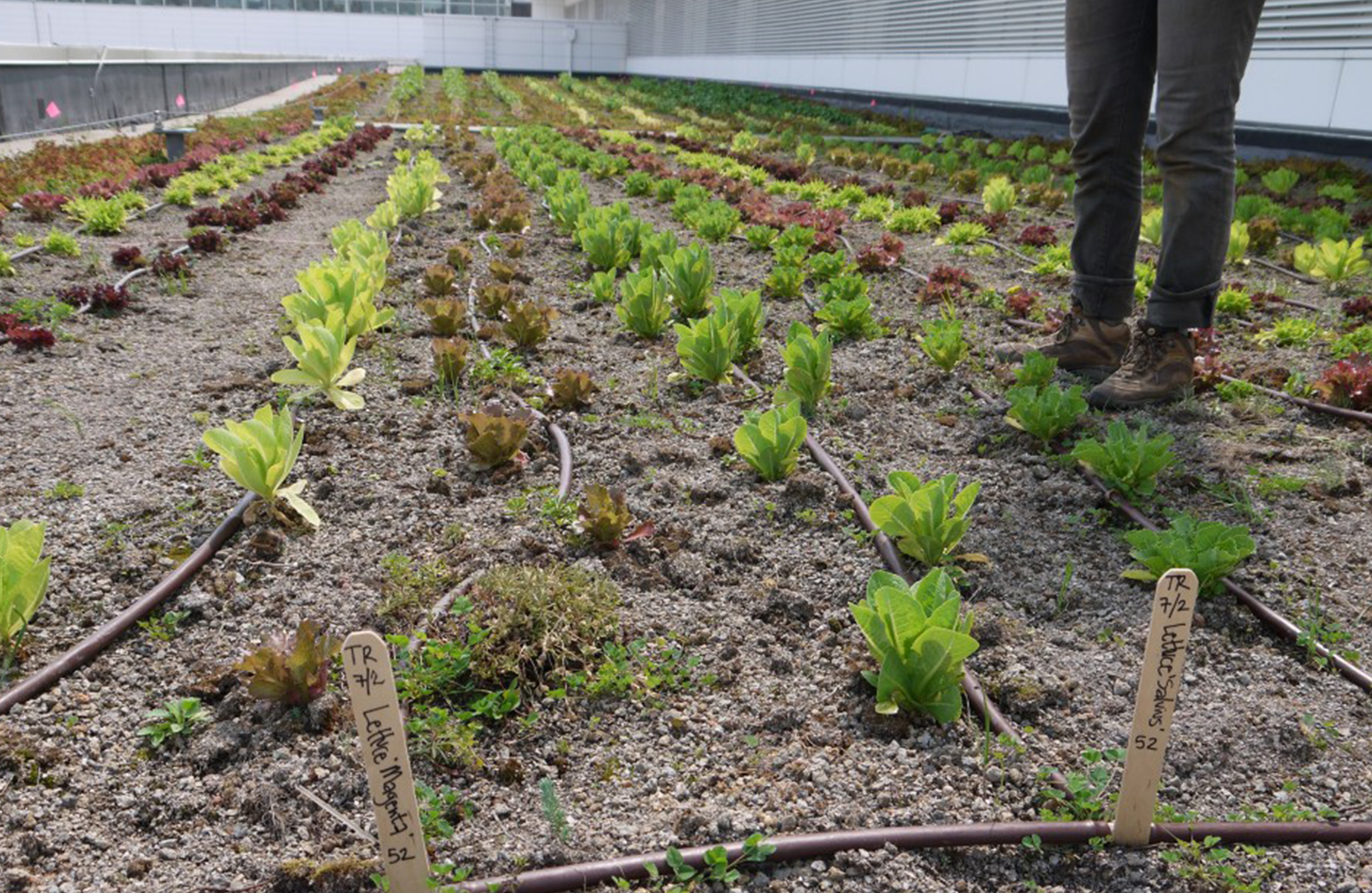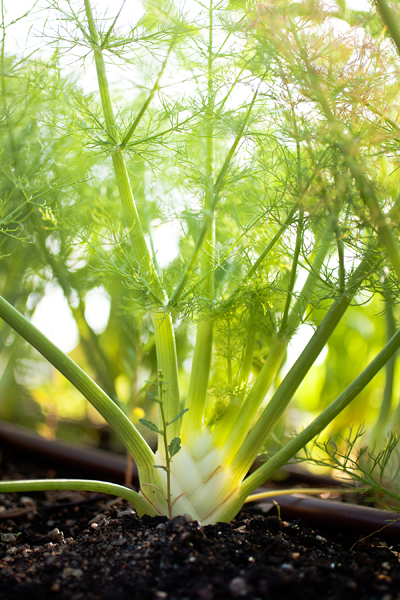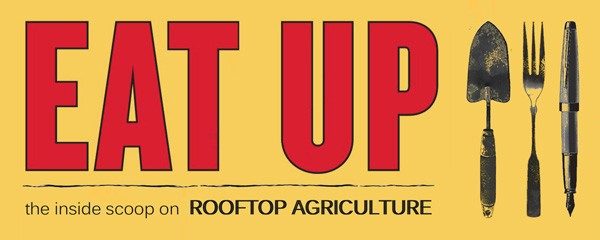data we can eat

McCormick Place Rooftop Farm test plots || photo by Lauren Mandel
Edible crops are dappling our cities’ skylines in growing numbers, and yet, the blossoming North American rooftop agriculture movement remains in its infancy. As rooftop farmers and gardeners increasingly build knowledge by experimenting and improvising with things like crop selection, staking techniques, and soil amendments, is there room at the table for formal scientific inquiry?

Rooftop fennel || photo by Patrick Rogers Photography
In celebration of my one-year anniversary as a landscape performance researcher (and licensed landscape architect!) with the Philadelphia-based landscape architecture and ecological planning firm Andropogon, it seems appropriate to give a nod to research. Entering this world of site performance analysis has heightened my awareness of the need for field research, or in this case “roof research” (pun intended), to cultivate useful information for rooftop agriculture stakeholders, from growers to restauranteurs to entrepreneurs.
At its core, scientific inquiry allows us to better understand our world through developing questions and then proposing evidence-based explanations. This process may allow us to notice trends, such as tomato plants producing more fruit on rooftops than at-grade, or even formulate cause and effect theories, like increased soil drainage causes increased tomato fruit production. Building a body of scientific research around rooftop agriculture is essential in maximizing the legitimacy of our young movement and the quality/efficiency of production. While publications exist about the benefits of rooftop agriculture and opportunities for industry-wide growth, surprisingly few studies have been published that address the technical “how to” of rooftop farming or vegetable gardening.
One notable rooftop farm engaged in an experimental study in 2013. The McCormick Place Rooftop Farm launched a “thin farming” research effort to determine the optimal soil amendment regiment for a smattering of rooftop crops grown in full sun and partial shade. The study, conducted by the Chicago Botanic Garden’s urban agriculture education and jobs-training initiative, Windy City Harvest, involved 20 test plots that composed the then, 1/4-acre farm, with systematic additions of 0%, 30%, 50%, or 70% amendments (by volume) in the planting hole of each veggie start. Daily observational data fed into a study and informed the subsequent year’s crop management strategy. Since that time, the farm has expanded to 2.5-acres – the Midwest’s largest rooftop farm – and produces 8,000 lbs. of produce annually for use by the McCormick Place convention center in the building below.
How can you engage in scientific inquiry within your rooftop farm or veggie garden? Here are six easy steps to follow:
1| Research question: Develop a question that can be answered through the collection of quantifiable data, such as pounds of fruit, height of plants, frequency of irrigation, or number of maintenance visits. This question may be causal in nature: How does soil drainage affect tomato yields?
2| Literature review: Perform a survey of published literature to better understand what questions others have asked, how they’ve investigated those questions, and what findings they reached. Like most non-academics, I don’t have access to expensive journal databases, like EBSCOhost, so I usually begin surveying the literature through Google Scholar. When I find relevant publications, I add them to a running list of references using the Purdue Owl Writing Lab‘s user friendly APA formatting rules.
3| Hypothesis: Based on your literature review, develop an educated guess about what will happen in your experiment: If soil drainage increases, then tomato yields will increase. Also acknowledge the opposite, or null hypothesis, which you will later accept or reject: If soil drainage increases, then tomato yields will not increase.
4| Experimental design: Next, plan an experiment in which you can change one condition, or variable, at a time (such as degree of soil drainage) while keeping all other conditions constant. This is how you isolate the variable you’re examining to support causal findings. You’ll need a comparison that shares the constant conditions, which will serve as the experimental control. Be sure that your sample size (such as number of tomato plants) is large enough to reach statistically significant findings, which can become even more significant it the study is replicated.
5| Data collection + analysis: Now you’re ready to carry out the investigation that you designed. Set a schedule for collecting data then make sure that the data is obtained the same way, ideally by the same person, each time. After the experiment is complete, thoughtfully analyze the data to draw relationships between evidence and explanations.
6| Communication: Sharing what you learned is the most critical step of the scientific process, assuming you aim to advance the rooftop agriculture industry’s knowledge base! Scientific communication traditionally involves publishing a paper in a scientific journal or presenting your results at a conference during a talk or on a poster. As a practitioner-researcher, I additionally find great value in writing about studies in trade magazines and blogs, and speaking about them at all sorts of conferences and events. These outlets generally reach audiences beyond the scientific community, and in the case of rooftop agriculture, the practitioners may be your target.
 EAT UP
EAT UP
Great article, as usual! Some feedback
Can you explain what a new scientist would do with the null hypothesis, or why it’s needed?
To know what’s “statistically significant” requires one to either take a stat’s course or know a statistician who can help with the analysis. Is there a good source to find these folks, or an online course rigorous enough to learn enough to publish? (like Khan Academy or equivalent?) Which is better, in your opinion: to join up with someone (how to find them?), or to learn it oneself (takes how much time)?
It would be really useful to have a list of 20 publications — in-print or online — that are rich enough to draw an audience yet cheap enough for unfunded scientists to publish. Got one of those lists? I think that communication is the key to science, so any help there would be quite fruitful (pun intended) to spur on farm science.
What can we learn from rooftop science that might also apply to ground farm science? Two bangs for the buck seems to double one’s odds of being read, or being useful.